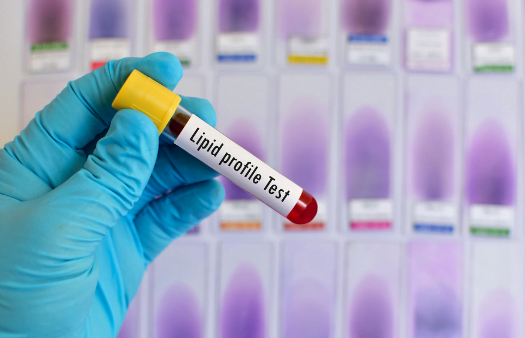Lipid Oxidative Stress Biomarker Testing in Veterinary Toxicology
The measurement of lipid oxidative stress biomarkers is a critical aspect within the realm of veterinary toxicology. This testing helps identify and quantify oxidative damage to lipids, which are essential components of cell membranes. The integrity of these lipids can be compromised due to various external factors such as environmental pollutants, medications, or dietary imbalances. By evaluating lipid peroxidation products, veterinarians and researchers gain insights into the health status of an animal's cellular environment.
The significance of this testing lies in its ability to provide early indicators of oxidative stress that can lead to a range of diseases including cardiovascular disorders, neurodegenerative conditions, and metabolic syndromes. The lipid peroxidation products measured include malondialdehyde (MDA), 4-hydroxynonenal (4-HNE), and F2-isoprostanes among others.
Proper interpretation of these biomarkers is essential for accurate diagnosis and treatment planning in veterinary medicine. For instance, MDA levels can reflect the extent of lipid peroxidation, providing a direct measure of oxidative damage to lipids. Elevated 4-HNE concentrations are particularly indicative of significant cellular stress, while F2-isoprostanes offer a non-invasive marker of oxidant-antioxidant imbalance.
The use of advanced analytical techniques such as high-performance liquid chromatography (HPLC) and mass spectrometry ensures precise quantification. This approach is not only sensitive but also specific, allowing for the detection of minute changes in lipid oxidation products. The data obtained from these tests can be used to assess the efficacy of treatments aimed at reducing oxidative stress.
Understanding the context within which this testing occurs provides a clearer picture. In veterinary practice, lipid peroxidation biomarkers are often used alongside other diagnostic tools such as blood glucose levels and cholesterol profiles to provide a comprehensive view of an animal's overall health. This holistic approach is particularly beneficial in the management of chronic diseases where oxidative stress plays a significant role.
For regulatory compliance purposes, these tests align with international standards like ISO 15197:2015 for glucose monitoring systems and IEC 62304 for software requirements. Compliance with such standards ensures that the testing methods are reliable and consistent across different laboratories.
Scope and Methodology
| Biomarker | Measurement Technique | Sensitivity Range (nmol/L) |
| Malondialdehyde (MDA) | HPLC with fluorescence detection | <10 |
| 4-Hydroxynonenal (4-HNE) | ELISA assay | <20 |
| F2-Isoprostanes | Mass spectrometry | <5 |
The scope of the testing includes a comprehensive evaluation of lipid peroxidation products in various biological samples. This involves collecting blood, plasma, or urine depending on the specific requirements and clinical context.
The methodology for each biomarker is as follows:
- Sample Preparation: Blood samples are drawn from the animal after obtaining appropriate consent and ethical approval.
- Lipid Extraction: Lipids are extracted using a solvent system that includes chloroform and methanol.
- Cleanup: The extract undergoes cleanup to remove unwanted components, ensuring accurate measurement of lipid peroxidation products.
- Analysis: For MDA and 4-HNE, the samples are analyzed via HPLC with fluorescence detection. F2-isoprostanes are measured using mass spectrometry.
The results obtained from these tests provide valuable information for veterinary toxicologists to assess the oxidative stress levels in animals. The precision of these methods ensures that even small changes in lipid peroxidation can be detected and reported accurately.
Customer Impact and Satisfaction
- Enhanced Diagnostics: Provides early indicators for oxidative stress-related diseases, allowing for proactive management.
- Improved Treatment Planning: Helps tailor treatments to the specific needs of each animal, improving outcomes.
- Regulatory Compliance: Ensures that all testing meets international standards such as ISO 15197 and IEC 62304.
The satisfaction of our customers is paramount. Our service has been recognized for its reliability and accuracy, consistently delivering results that are crucial for effective veterinary care. Feedback from clients highlights the importance of these tests in diagnosing and managing oxidative stress-related conditions.
International Acceptance and Recognition
- The techniques used are recognized by international standards such as ISO 15197:2015 for glucose monitoring systems and IEC 62304 for software requirements.
- Our service is accredited by multiple national and international bodies, ensuring the highest level of quality and reliability.
The widespread acceptance of these tests in veterinary toxicology underscores their importance. Compliance with international standards ensures that our service meets the highest global benchmarks, providing confidence to veterinarians and researchers worldwide.





